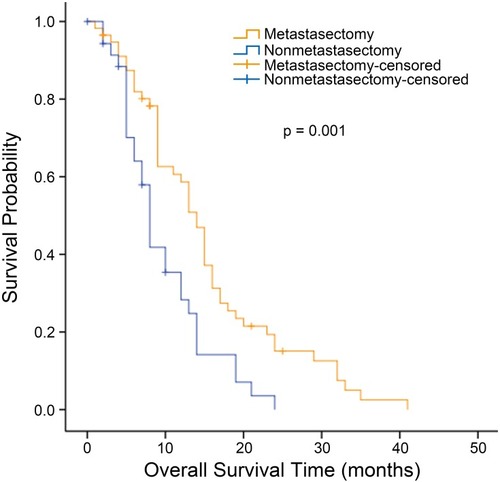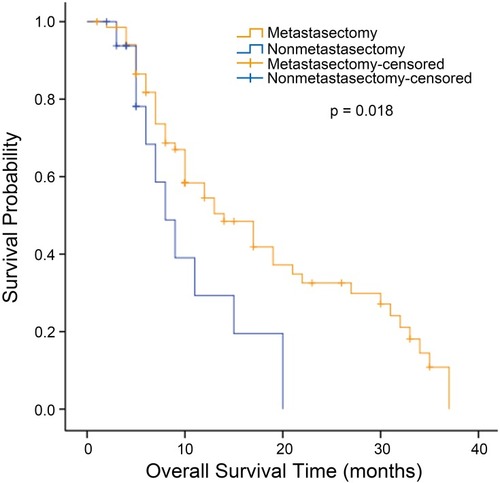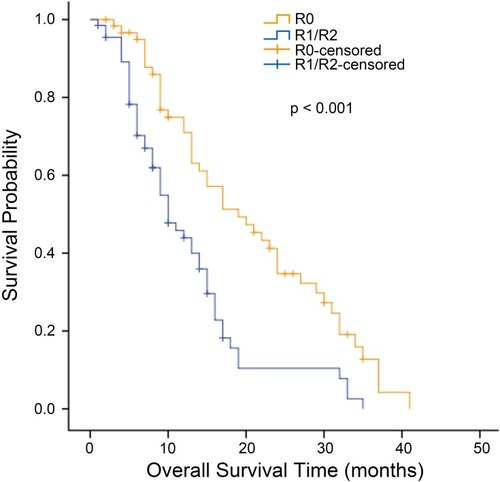Figures & data
Table 1 Clinical Characteristics of 94 Patients with Synchronous Krukenberg Tumors
Table 2 Clinical Characteristics of 88 Patients with Metachronous Krukenberg Tumors
Figure 1 Kaplan–Meier analysis of overall survival in patients with synchronous Krukenberg tumors who did or did not undergo metastasectomy.

Figure 2 Kaplan–Meier analysis of overall survival in patients with metachronous Krukenberg tumors who did or did not undergo metastasectomy.

Figure 3 Kaplan–Meier analysis of overall survival in patients who underwent metastasectomy according to the residual disease state. The residual disease state of each patient was documented as the presence or absence of gross residual disease, which was classified as negative resection margins (R0), microscopic tumor infiltration (R1), and macroscopic residual tumor (R2).

Table 3 Univariate and Multivariate Analyses of Overall Survival in 182 Patients
